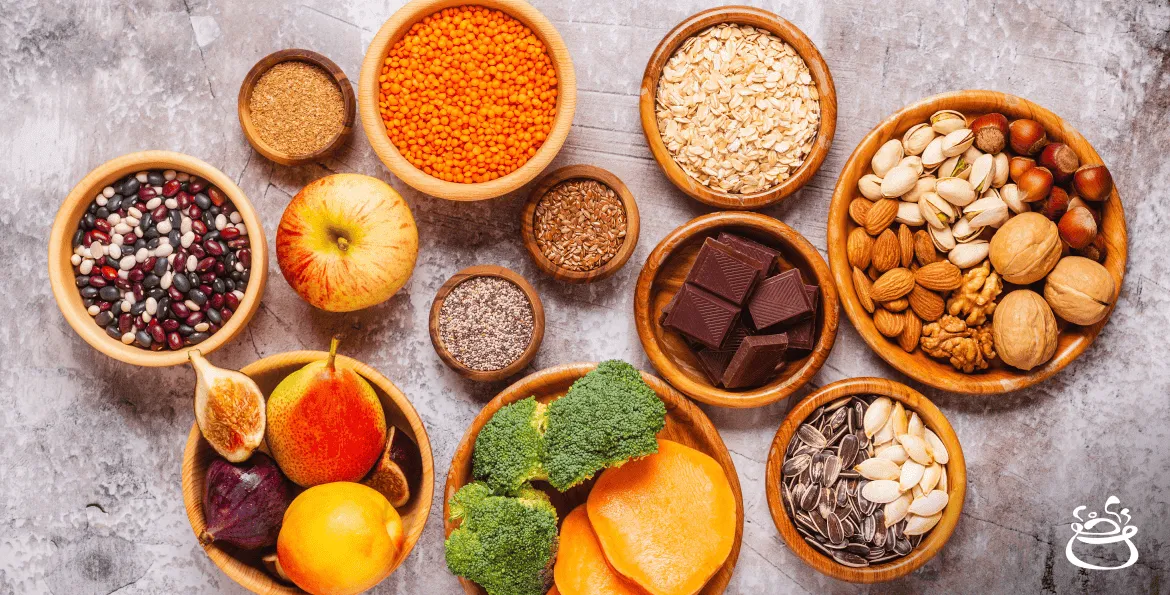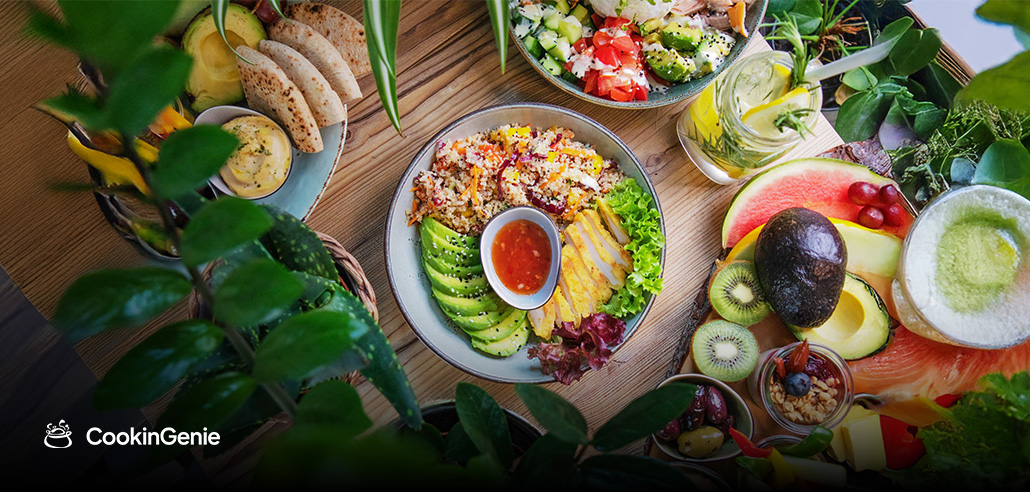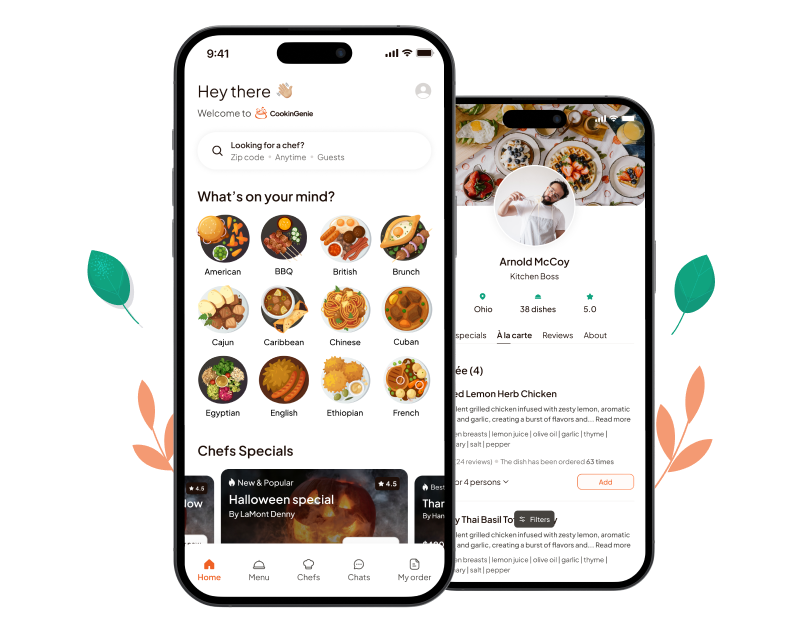Simple Tricks for Getting More Fiber in Your Diet
With all the nutritional advice being pushed at us these days, it seems everyone is talking about one thing: Fiber. We all know that getting enough dietary fiber is essential for a healthy digestive system, increased energy levels, and overall improved well-being.
However, between finding time to cook meals with more natural sources of fiber or remembering to buy all the right products in the supermarket – efficiently getting more fiber in your diet can be a real hassle. Luckily, we are here to help.
This blog post will share some simple yet effective tricks and swaps to incorporate into your daily routine to increase your fiber intake quickly—no extra cooking or shopping required. So, if you’re ready to start feeling your best self, settle down, and let’s dive right into how to get more fiber in your diet.
About Fiber: Types and Benefits
Fiber is a carbohydrate in plant-based foods like fruits, vegetables, legumes, whole grains, nuts, and seeds. Unlike other carbohydrates, fiber is not broken down by our body’s enzymes, so it travels through our digestive system intact and comes out in our stool.
Fiber is essential for maintaining our digestive health because it helps regulate bowel movements, prevents constipation, and reduces the risk of diseases like hemorrhoids, diverticular disease, and colorectal cancer. Additionally, fiber can help control blood sugar levels by slowing down glucose absorption into the bloodstream, making it beneficial for people with diabetes.
There are two types of fiber: soluble and insoluble.
Soluble fiber dissolves in water and forms a gel-like substance in the digestive tract, helping to lower cholesterol levels and control blood sugar. Good sources of soluble fiber include oats, barley, legumes, fruits, and vegetables.
Insoluble fiber does not dissolve in water and adds bulk to our stool, preventing constipation and promoting regular bowel movements. High-insoluble fiber sources include whole grains, nuts, seeds, and vegetables.
Most plant-based foods contain both types of fiber, so eating a variety of high-fiber foods as part of a balanced diet to benefit from both types of fiber is essential.
The recommended daily fiber intake for adults is 25-30 grams, and drinking plenty of water with a high-fiber diet is essential to help the fiber move through the digestive system.
Sources of Dietary Fiber
Consuming dietary fiber is essential to maintaining balanced daily nutrition, and knowing where it comes from can be helpful. Some sources of dietary fiber include fruits, vegetables, legumes, whole grains, nuts, and seeds.
Fruits like apples and bananas are excellent sources of fiber, providing 4-7g per serving.
Leafy greens like spinach and kale are also high in fiber, containing around 7g in a large plate.
Legumes such as lentils, chickpeas, and beans pack 10g of dietary fiber in just one serving.
Whole grains like brown rice and oats are good choices, providing 3-5g per cup.
Finally, nuts and seeds add a crunchy texture to meals while being surprisingly high in fiber, with 2-4g per 1/4 cup.
So, if you ever wonder how to increase fiber intake, incorporating these diverse sources of nutritional goodness into your diet will help you stay energized throughout the day.
Simple Tricks for Getting More Fiber in Your Diet
Adding extra fiber to your diet is incredibly important. Not only does it promote digestive health and keep you regular, but research has shown that it can help you maintain a healthy weight and reduce your risk of diseases like type 2 diabetes, heart disease, and cancer. The best part? Fiber is the ultimate hunger buster that won’t pack on the pounds. So, if you’re ready to cut back on unnecessary snacking, here are some tips to help you get started.
Include Whole Grains in Your Meals
Adding more fiber to your diet doesn’t mean you have to count every fiber in your cereal bowl. The secret is to opt for whole grains instead of their processed, refined counterparts.
Whole grains are packed with fiber, vitamins, minerals, and antioxidants, making them a smart choice for your health and taste buds. And the best part? They’re incredibly versatile and perfect for a variety of recipes. The options are endless, from a comforting bowl of oatmeal for breakfast to a hearty brown rice pilaf for dinner or a zesty quinoa salad for lunch.
Just read the nutrition labels and watch out for added sugars. You can get all the fiber your body needs without sacrificing flavor with a few easy swaps.
Add Fruits & Vegetables to Every Meal
Getting enough fiber in your diet can be challenging, but there’s an easy, delicious trick to help you out – add some fruits and veggies to every meal.
Seriously, all it takes is one little tomato, one cucumber slice, or one handful of nuts – every day – and you’ll up your daily fiber intake in no time.
Plus, with so many flavorful options available, you’re sure to find something that tickles your taste buds. So, get on board the fiber train and ride through the fruit & veggie garden straight to better health.
Choose Fiber Snacks
Including high-fiber snacks is an easy and effective way to increase your daily fiber intake. You don’t have to look for fancy or expensive superfoods, as simple choices like fresh fruits and vegetables, legumes, nuts and seeds, and whole grains can provide a significant amount of dietary fiber. You can opt for these snacks whenever you need to munch on something.
However, choosing the same old snacks as carrots and celery can become monotonous. To keep it exciting, experiment with new high-fiber ingredients in your snacks. You can make power bars and smoothie bowls or incorporate chia seeds, flax meal, tahini, and oats into your recipes.
Snacking on chips can also be healthy if you choose whole wheat pita chips or black bean tortilla chips. With a bit of creativity and exploration, you’ll never look back once you discover how to make fiber fun.
Increase Your Intake of Legumes
Do you want more options on how to add fiber to your diet? Increasing your intake of legumes is a simple and tasty way to boost your fiber intake. Legumes, such as beans, peas, and lentils, are an excellent source of nutrition, including protein, iron, and dietary fiber. You can easily incorporate them into your diet by cooking them in soups, stews, and salads or mashing them into healthy dips.
The versatility of legumes means that you can enjoy them in various dishes, and fiber has many health benefits. With legumes, you don’t have to sacrifice flavor for nutrition. So, bring more legumes into your life and enjoy the many benefits of a fiber-rich diet.
Conclusion
Incorporating more fiber into your diet doesn’t have to be complicated or time-consuming. By following these simple tricks, you can start reaping the benefits of a fiber-rich diet. With CookinGenie’s private chef service, you can take it to the next level by having delicious, healthy, and customized meals prepared for you while ensuring that you meet all your dietary restrictions.
So don’t let dietary restrictions or a busy lifestyle hold you back from getting the fiber your body needs – with CookinGenie, you can have it all.



 Settings
Settings
 Gift Card
Gift Card Blog
Blog Locate Us
Locate Us










 Home
Home
 Chefs
Chefs
 Chats
Chats
 My Order
My Order



